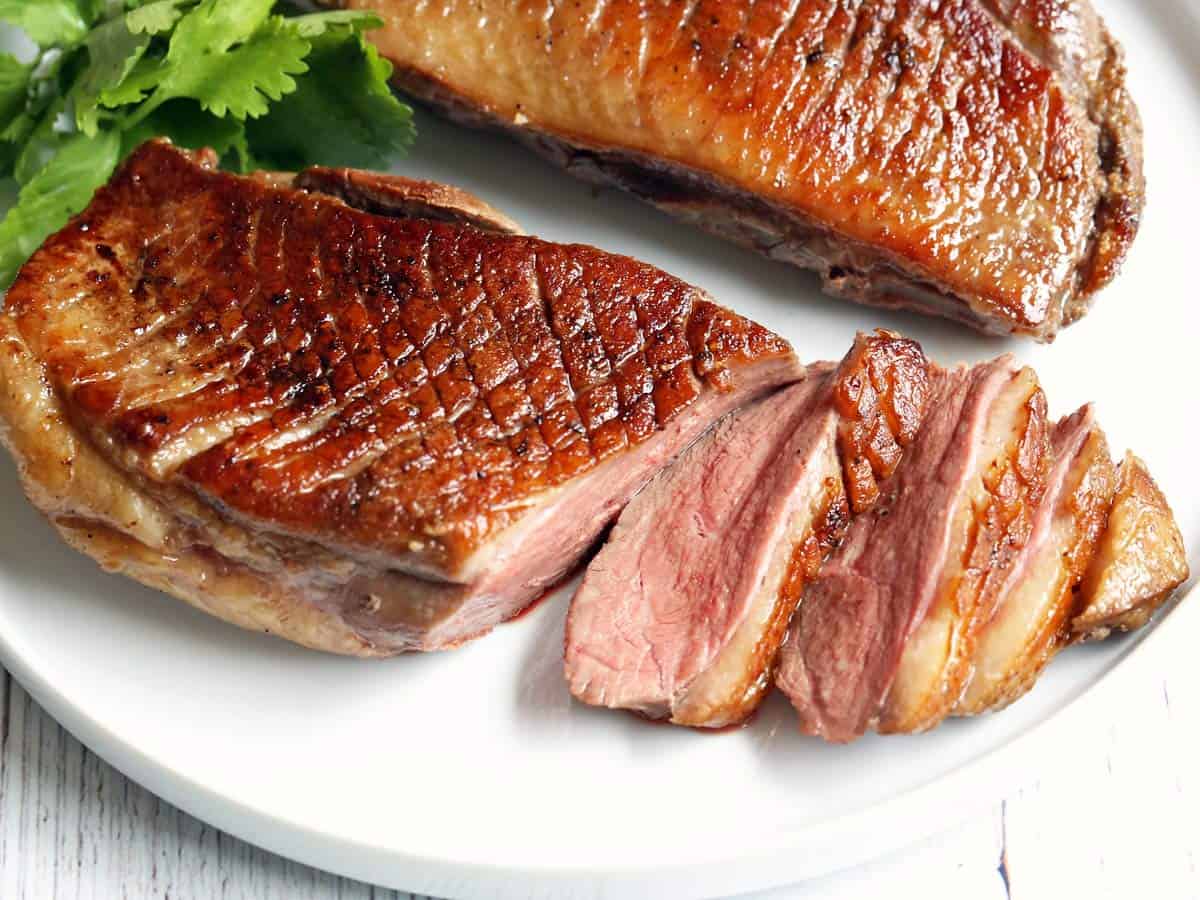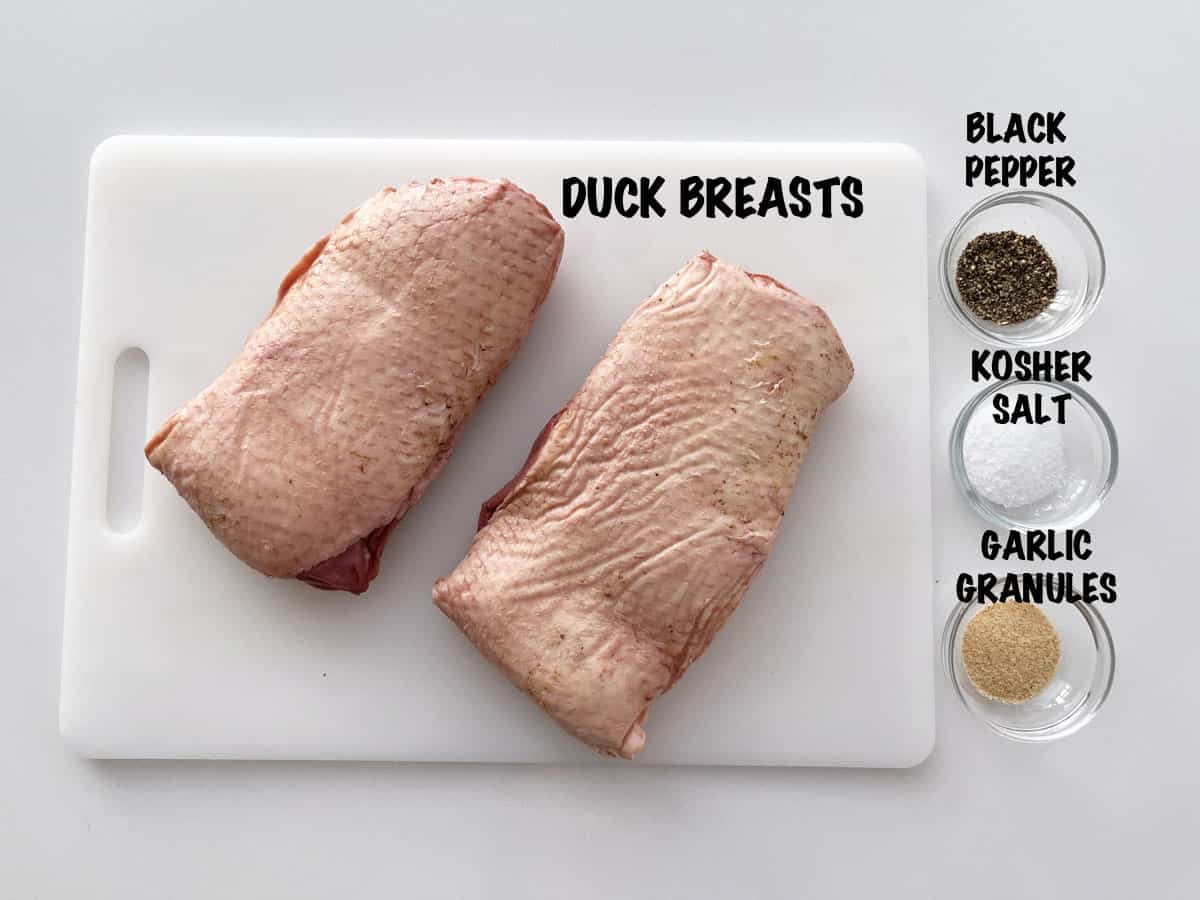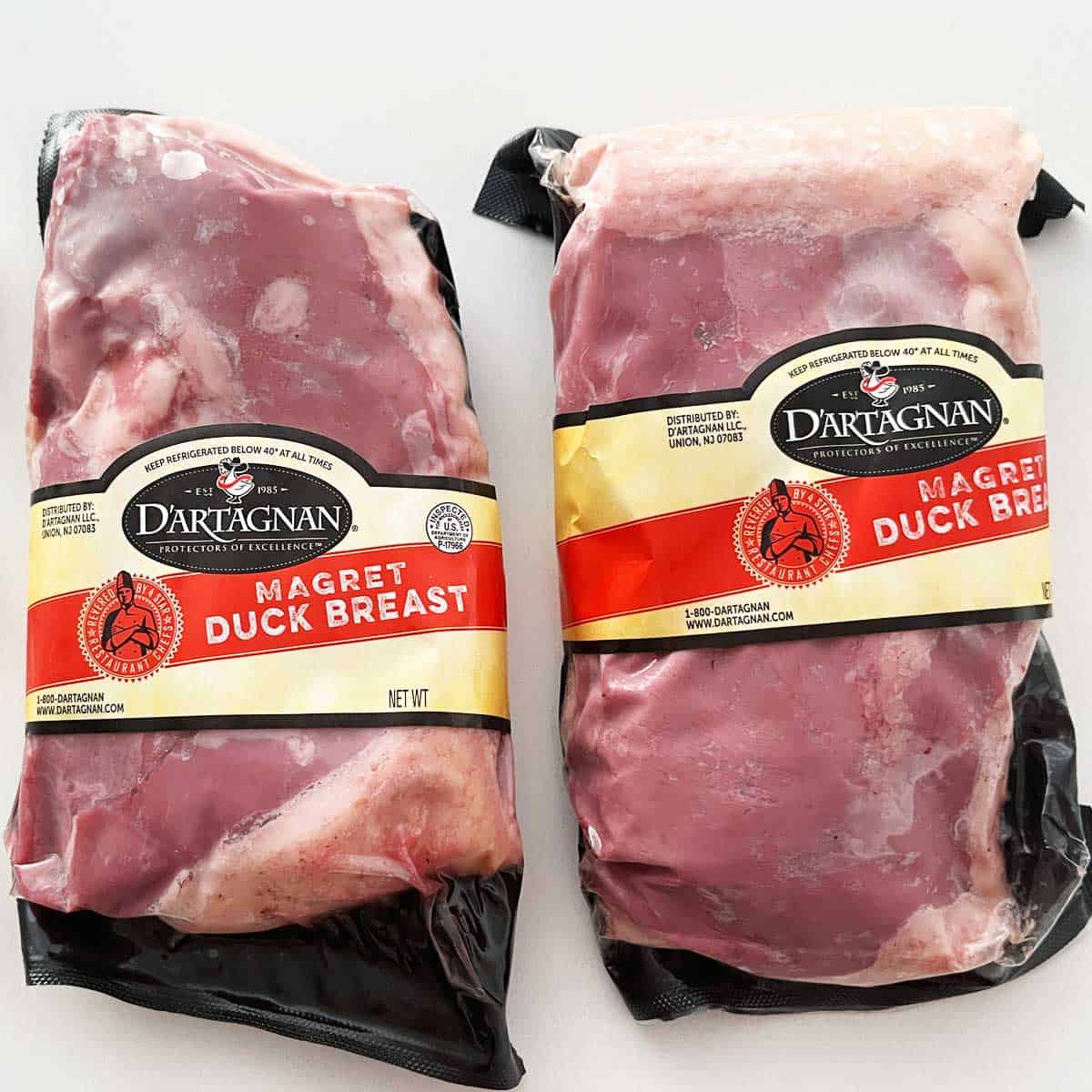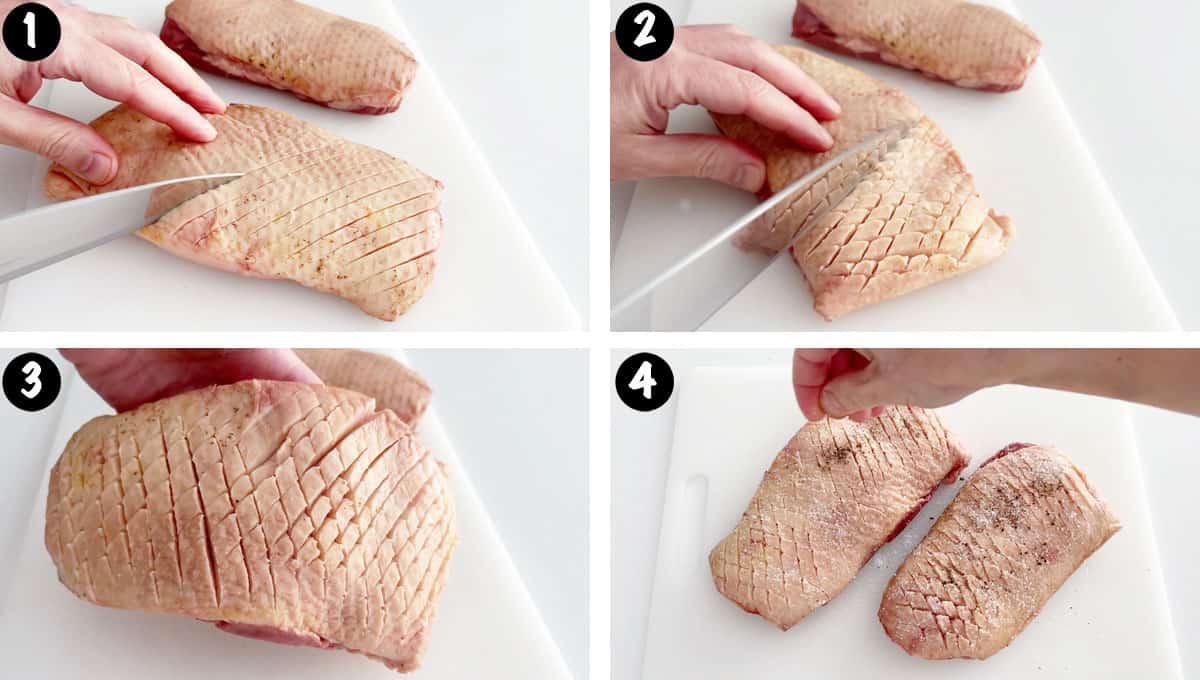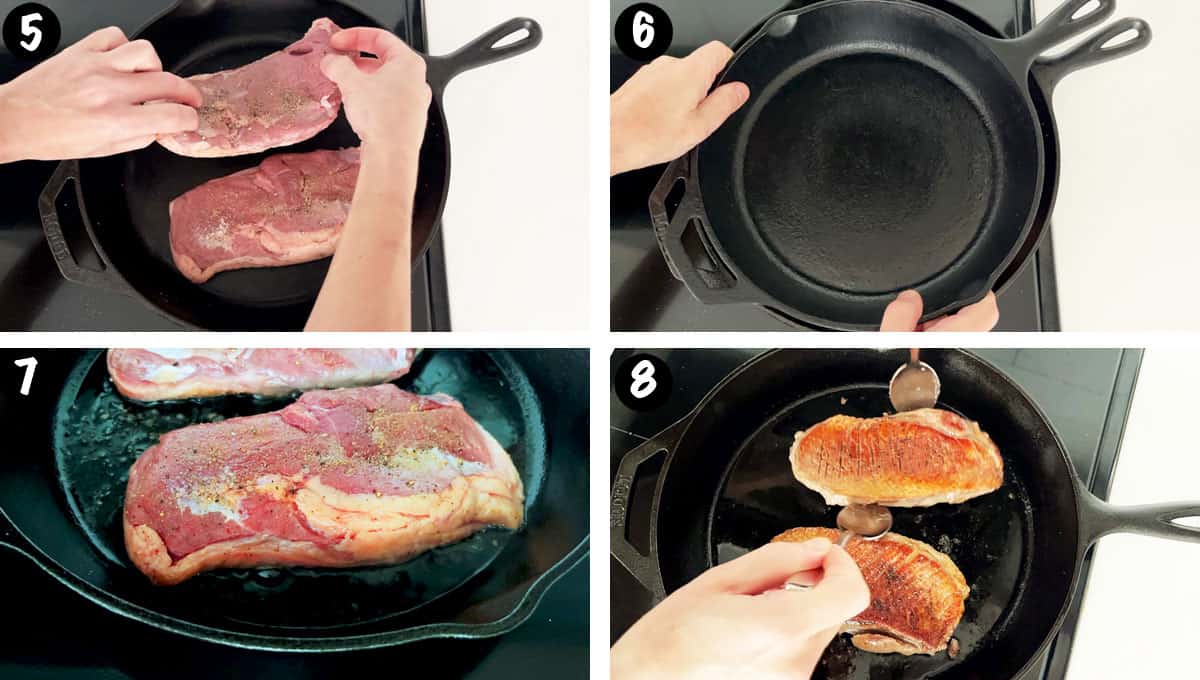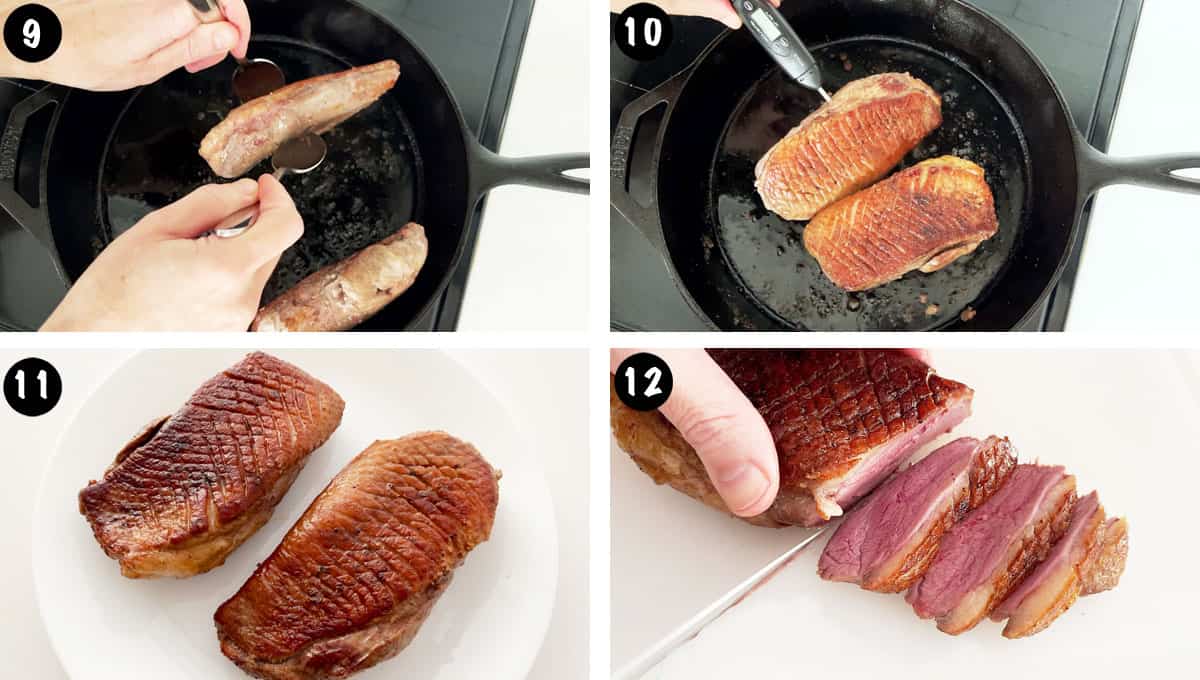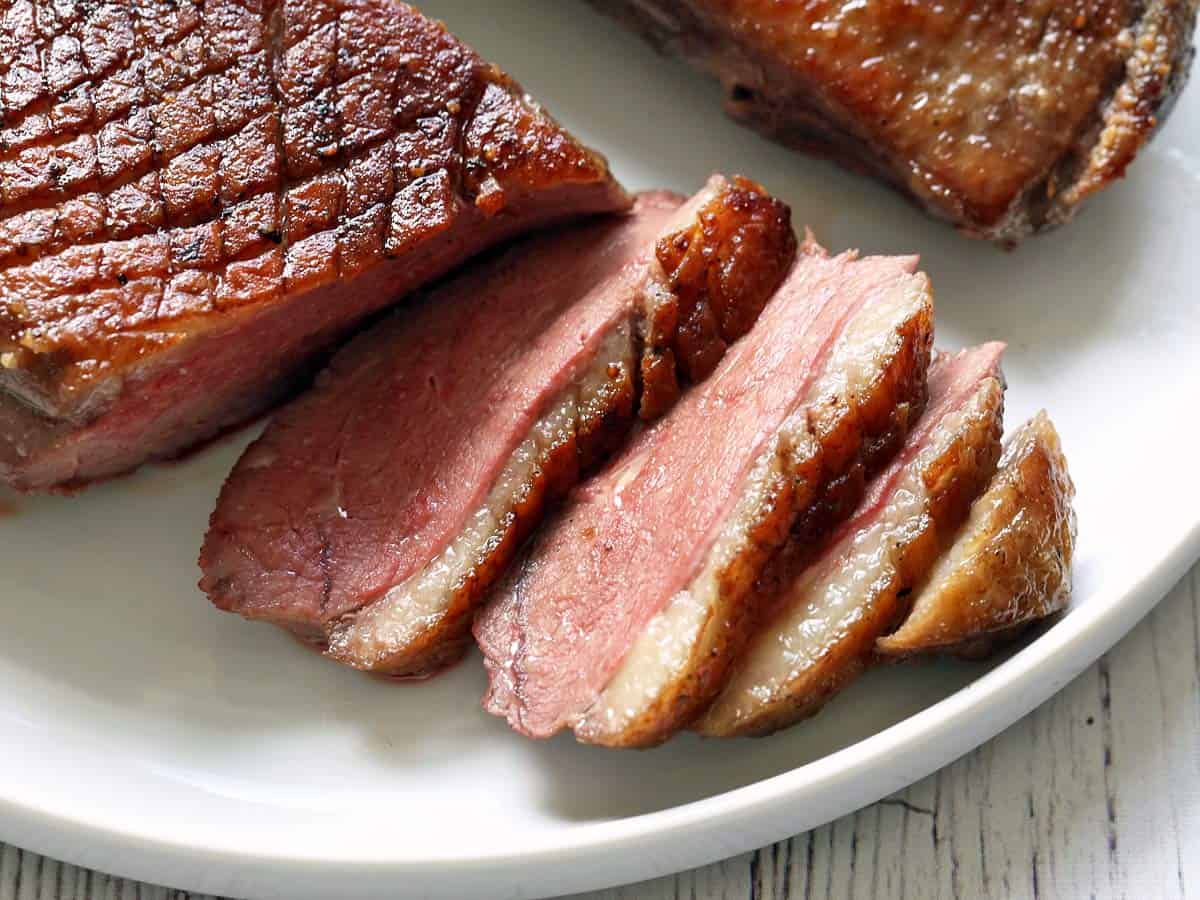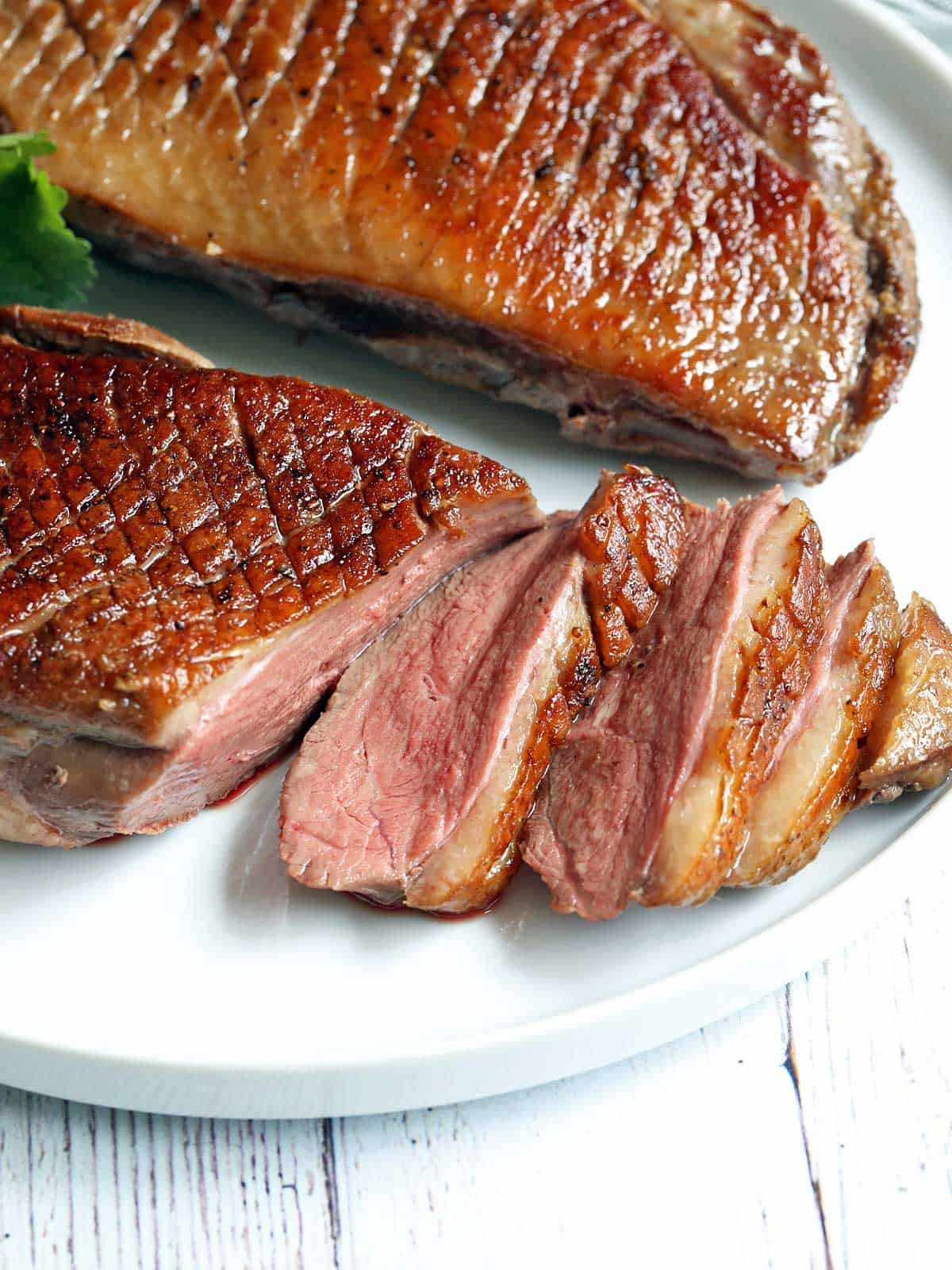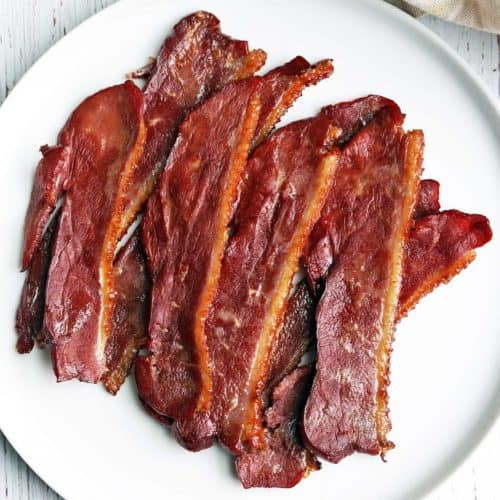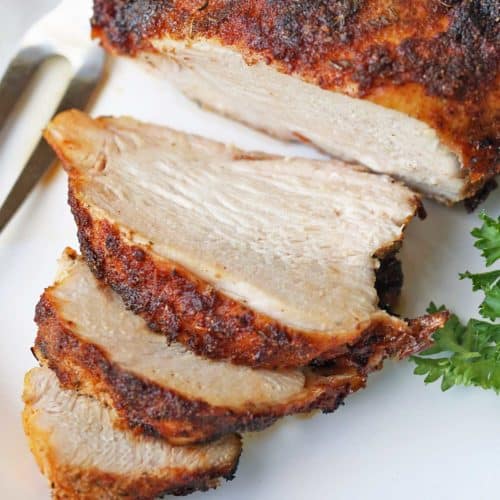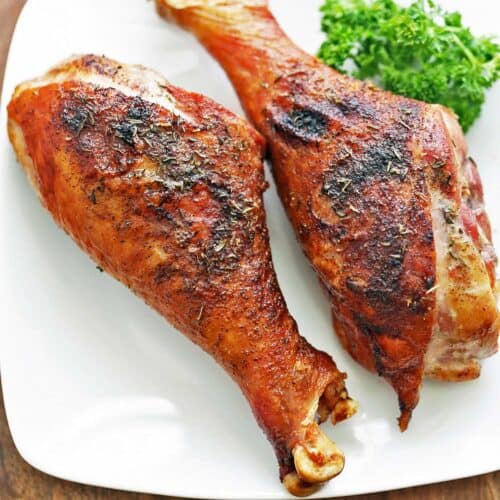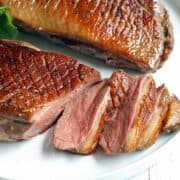Ready in just under an hour (and this includes resting the cooked meat), this recipe is quite suitable for a weeknight dinner. This is one of those entrees that you typically find on fancy restaurant menus, and you would think it was a complex recipe to make. But in fact, cooking duck breast in a skillet is easy, especially since I don’t bother with a sauce. I don’t like the sweet sauces that are typically served with this dish and I’d much rather appreciate the flavors of the meat itself. It’s fatty and marvelous and deserves my full attention.
Ingredients
Instructions
Expert tips
When scoring the skin, be careful not to nick the flesh. Make a tight but shallow diamond pattern, as shown in the video below. This will ensure that fat is rendered and the skin crisps up, but it will also ensure that some tasty fat remains. The deeper you score, the less fat will remain.While cooking, make sure that the fat keeps its gentle bubble and adjust the heat accordingly as needed. You don’t want the fat to splatter. That would mean the pan is too hot. You also don’t want it to go silent - that means the pan is too cold. In other words, this is one of those recipes that requires constant vigilance and monitoring.Twice during the process of cooking, carefully pour the rendered fat into a measuring cup, strain it, and save it in the fridge for later use, or discard it in the trash once it’s cooled off. Don’t pour it down the drain or it will clog your sink.
Frequently asked questions
Variation
If you’d like to serve the duck with sauce, here’s a very simple pan sauce that I sometimes make: Duck breasts: I make this recipe for two, so I use two of them. You can order them online, or if you’re lucky like I am and your supermarket carries them, you should be able to find them at the butcher’s counter. This is the brand I use: To season: Kosher salt, black pepper, and garlic granules. The addition of garlic is nontraditional, but since I don’t add a sauce, I feel that it enhances the flavor of the meat. You start by scoring the skin. You’ll want to use a very sharp knife, and score it in a tight but shallow diamond pattern. Now, season the skin side with salt and pepper. Season the flesh side with salt, pepper, and garlic powder. Place the duck, skin side down, in a cold pan. I use a cast-iron skillet. Place another heavy pan on top. This will ensure that the skin has full contact with the pan and will also help prevent the edges from curling. Heat the pan over medium-low heat. It should take about five minutes to heat, and then you’ll see that the fat is being rendered. The fat will bubble in the pan - you want it to gently bubble throughout the cooking process. This is the sound you’re looking for: Cook the duck pieces until the skin is browned, about 15 minutes. Flip them to the other side and cook them for about 2 minutes, then cook the edges, 30 seconds on each edge. Check the temperature with an instant-read thermometer. It should read 130°F for medium-rare or 140°F for medium. I don’t know if you can see it in the video, but my duck breasts reached a temperature of about 135°F when I removed them from the pan. (It should probably be noted that the USDA recommends cooking duck to an internal temperature of 165°F.) Remove the duck pieces from the pan onto a cutting board. Let them rest for 10 minutes, then slice thinly and serve. Once the duck is cooked and is resting, pour the remaining fat out of the skillet. Add ¼ cup of your favorite wine (white or red), increase the heat to medium, and use the wine to deglaze the bottom of the pan. If you’d rather not use wine, you can use chicken broth instead and add a teaspoon or two of red wine vinegar. Add a minced garlic clove, two tablespoons of butter, and salt and pepper to taste. Cook the sauce over medium heat, whisking, until it slightly thickens (1-2 minutes), then serve it alongside the duck.
Serving suggestions
Since this is a recipe that requires constant vigilance, to make sure that the pan maintains a gentle bubble of the fat, I prefer to serve this dish with a side that I can make ahead and serve cold. So I often serve it with one of the following:
Tomato saladAsparagus saladCreamy cucumber salad
Storing leftovers
You can keep the leftovers in the fridge, in an airtight container, for up to 4 days. Reheat them very gently, in the microwave on 50% power.
Related recipes
👩🏻🍳 I typically publish a new or an updated recipe once a week. Want these recipes in your inbox? Subscribe! You can unsubscribe at any time.
Recipe card
❤️ Let’s connect! Follow me on Pinterest, Facebook, TikTok, YouTube, Instagram, or Twitter.
